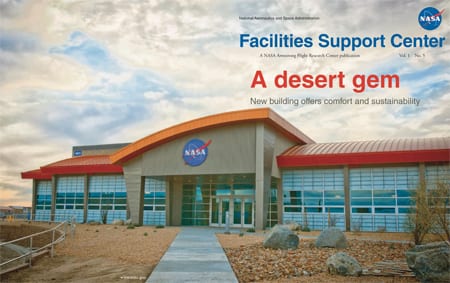Fullerton’s ‘flying architect’ designs dog kennels to NASA projects
BY LILY LEUNG / STAFF WRITER
One of J. Bruce Camino’s first assignments as a government contractor was to design a dog kennel for the Marine Corps center at Twentynine Palms, a minor project that ended up laying the foundation for the young architect’s future company.
A good review on that $35,000 contract led the Anaheim Hills resident to more government-related work.
Twenty-five years later, his architecture firm, Santa Ana-based Development One, handles major projects such as a recently completed $14 million design project for NASA. Government contracts make up roughly 95 percent of his total business.
The kennel represented “a stepping stone to the next project,” said Camino, 55. “A lot of people ignore that. They focus on the change orders instead of what the government has in mind. When you have service in mind, you get more work.”
For small businesses, getting a government contract is no easy feat.
Less than one in five federal contract dollars, or 19 percent, were awarded to small businesses in fiscal 2012, the most recent year analyzed, according an independent study released by the House Committee on Small Business in 2013.
The committee has been critical of that number because the annual federal goal is 23 percent.
It’s important to note that by U.S. government estimates, the 23 percent mandate was met last year for the first time since 2005. But the House Committee on Small Business contests that, saying the count does not include certain agencies.
In any case, how does an independent business get its foot in the door?
Here are four key takeaways from the Register’s conversation with Camino on a recent weekday at Fullerton Municipal Airport, among his upcoming design projects:
1. Get in touch with the U.S. Small Business Administration. Simply put, the U.S. government pays private companies for goods and services every year. The Small Business Administration is involved because it tries to connect those contracts for those goods and services to small firms.
Federal officials spent more than $515 billion in prime contracts in fiscal 2012. Of that, $100 billion went to small businesses. Special focus is put on involving disadvantaged groups such as women, minorities and veterans. In fact, the agency has specific goals for each group, such as 5 percent for women-owned businesses and 3 percent for service-disabled veteran-owned firms.
2. Know yourself. Government contract work isn’t for everybody, Camino said. It involves loads of paperwork, thorough background checks and obtaining security clearances. Does he mind the bureaucracy? “No, I’m the type of person who’s by the book,” he said. “I embraced it.”
3. Patience pays off. Camino left the private sector in the 1980s to start his own business out of his garage. He said it took him about three years before he got his first government contract. Another misconception is that once you hang up your shingle, business will immediately come in. Not so much, he said. It will take five to 10 years to establish yourself.
4. Be distinctive. Aside from being a licensed architect, Camino is also a licensed pilot and owner of a 1966 Piper Comanche plane, which he keeps at Fullerton Municipal Airport. The aircraft, he said, has earned him the nickname of “The Flying Architect” because he often flies himself to faraway projects. This helps him stand out from competitors, who may not be able to reach assignments as quickly as he does, he said.
He regularly flew his Comanche to projects at the NASA Armstrong Flight Research Center at Edwards Air Force Base. The plane has proven to also be a time-saver. What’s typically a three-hour drive from Fullerton to that facility took 30 minutes by plane, he said.
Click here to full PDF version of article.
Click here to view on the OC Register Website.
[smartslider2 slider=”5″]



